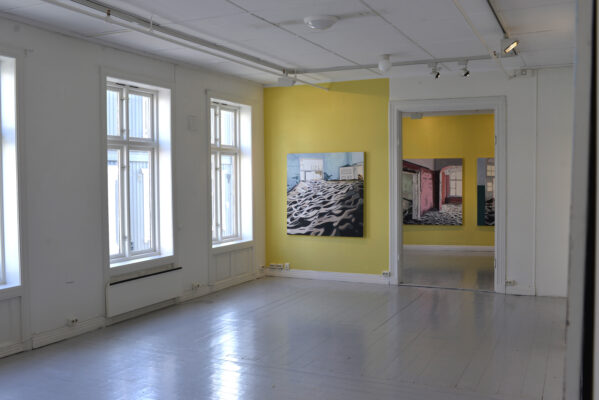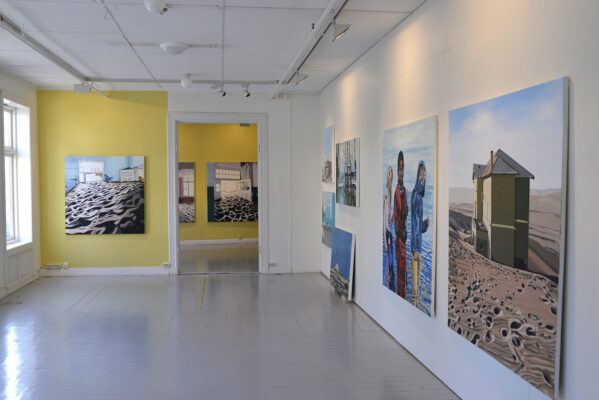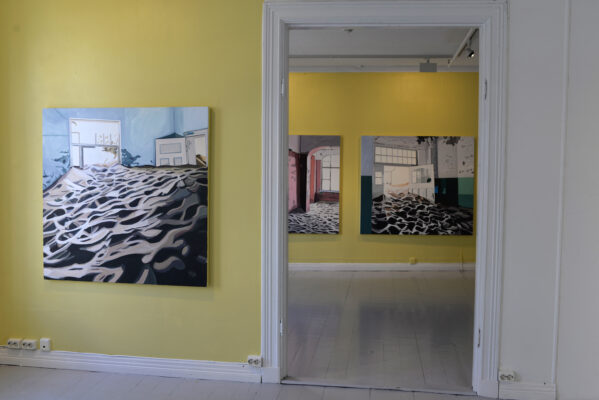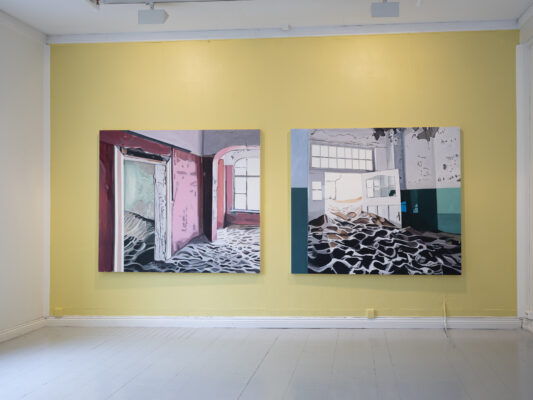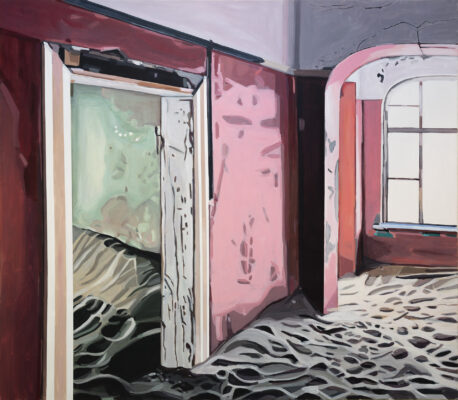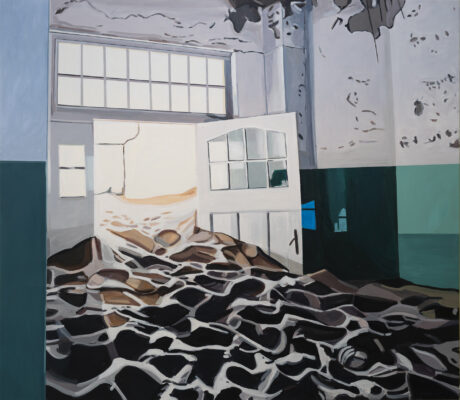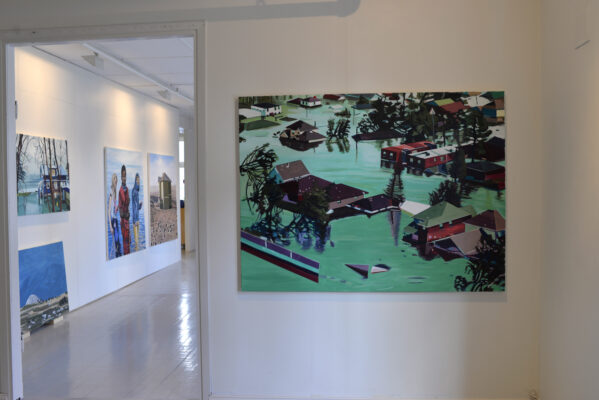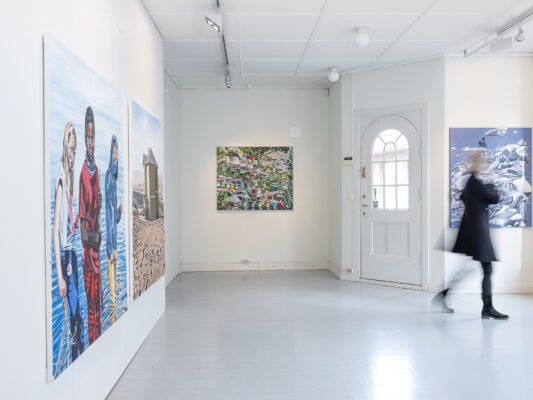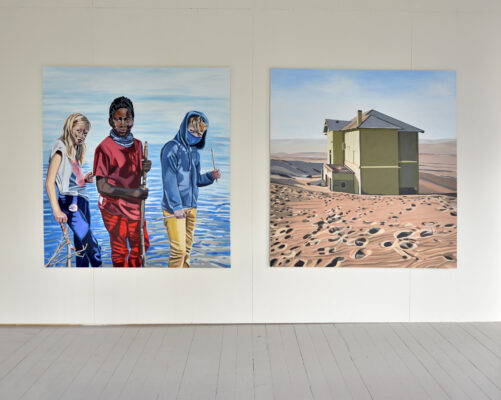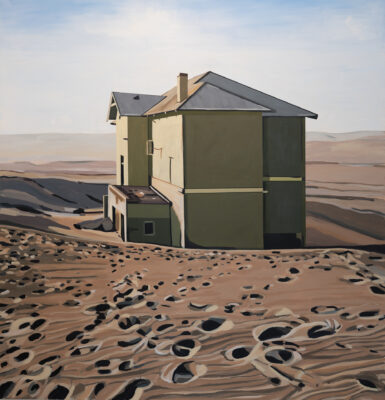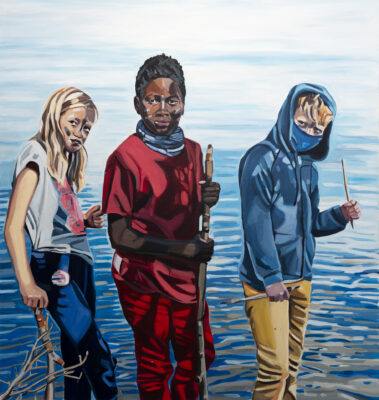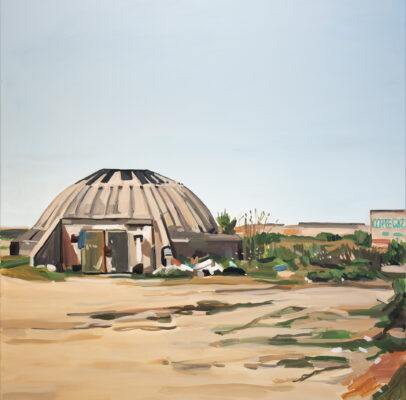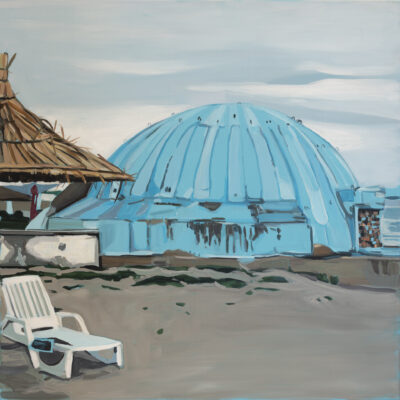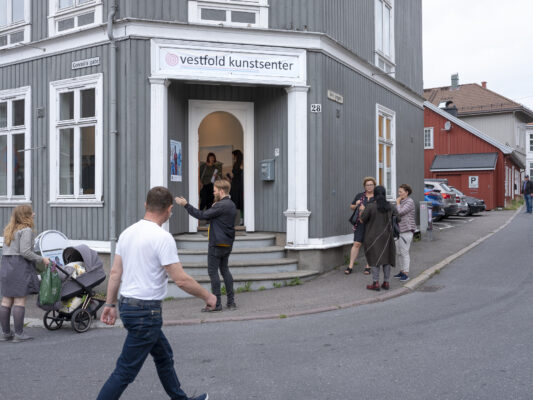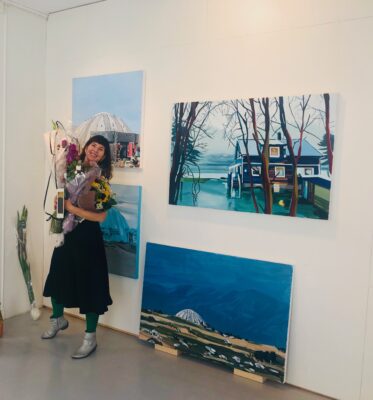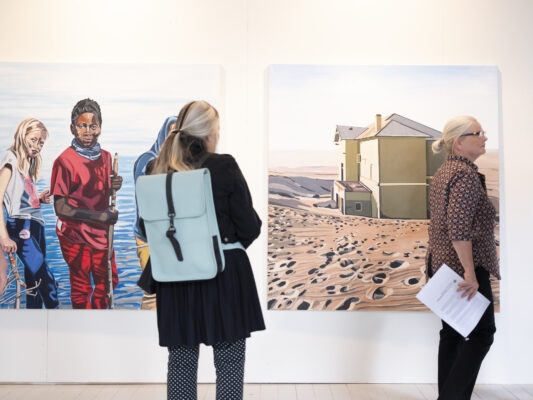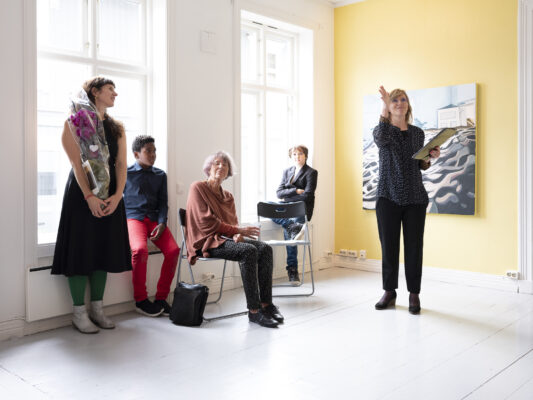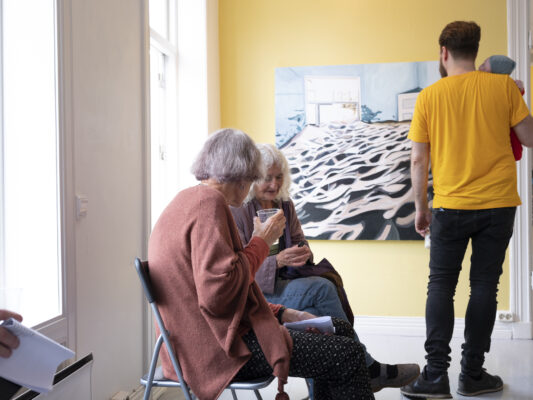BEFORE AFTER
Vestfold Art Center
In the exhibition Before After, I presented a series of new paintings that explore themes of fear—fear of natural disasters, terrorism, the media’s growing use of hate rhetoric, and the individual’s sense of helplessness.
The works offer a visual and personal interpretation of the moment before and after a collapse. They depict states of alertness or emptiness, unease or calm. The paintings are rooted in real or imagined places and events where nature has reclaimed what was once man-made, and where utopian visions have failed.
The source material for the exhibition includes documentary photographs taken during travels in Albania and Namibia.
Albania, once considered the world’s most closed-off country under its communist regime, was ruled by fear. Dictator Enver Hoxha had approximately 800,000 concrete bunkers constructed across the country—monumental, utopian structures that ultimately served no practical purpose. Today, they remain as eerie reminders of a regime fueled by paranoia.
There are many myths surrounding the abandoned German diamond mining town of Kolmannskuppe in Namibia. In connection with the construction of a railway in 1908, a worker stumbled upon a strange stone many miles out in the desert. Not long after, fortune seekers from around the world flocked to the area. The diamonds brought enormous wealth, and soon the desert town had its own opera house, bowling alley, and a tram line several hundred meters long. In 1928, the world’s largest diamond was found a few dozen miles further south. Many of the town’s residents were swept up in the ensuing diamond rush, and the town was almost overnight abandoned. Today, Kolmannskuppe stands as a giant ghost town, but also as a symbol of the colonial era, where nature has slowly reclaimed the area by burying the houses in sand
Documentary photographs from these locations formed the conceptual framework for the exhibition. These images were translated into large-scale paintings that, through their staging within the gallery space and juxtaposition of motifs, generate new narratives—stories that resist being anchored in a specific time or place.
Photos from the opening and most documentation: Thomas Johnsen



